PRE-RELEASE
Turbo
| Turbo |
| To remove |
|
|||||||
|
|||||||||||||
| 1. |
Carefully release the expansion tank cap and release any overpressure.
|
|
| 2. |
Unplug the connector for the oxygen sensors and carefully lower the cables.

|
|
| 3. |
Remove the crankcase ventilation hose from the camshaft cover and the turbo inlet.
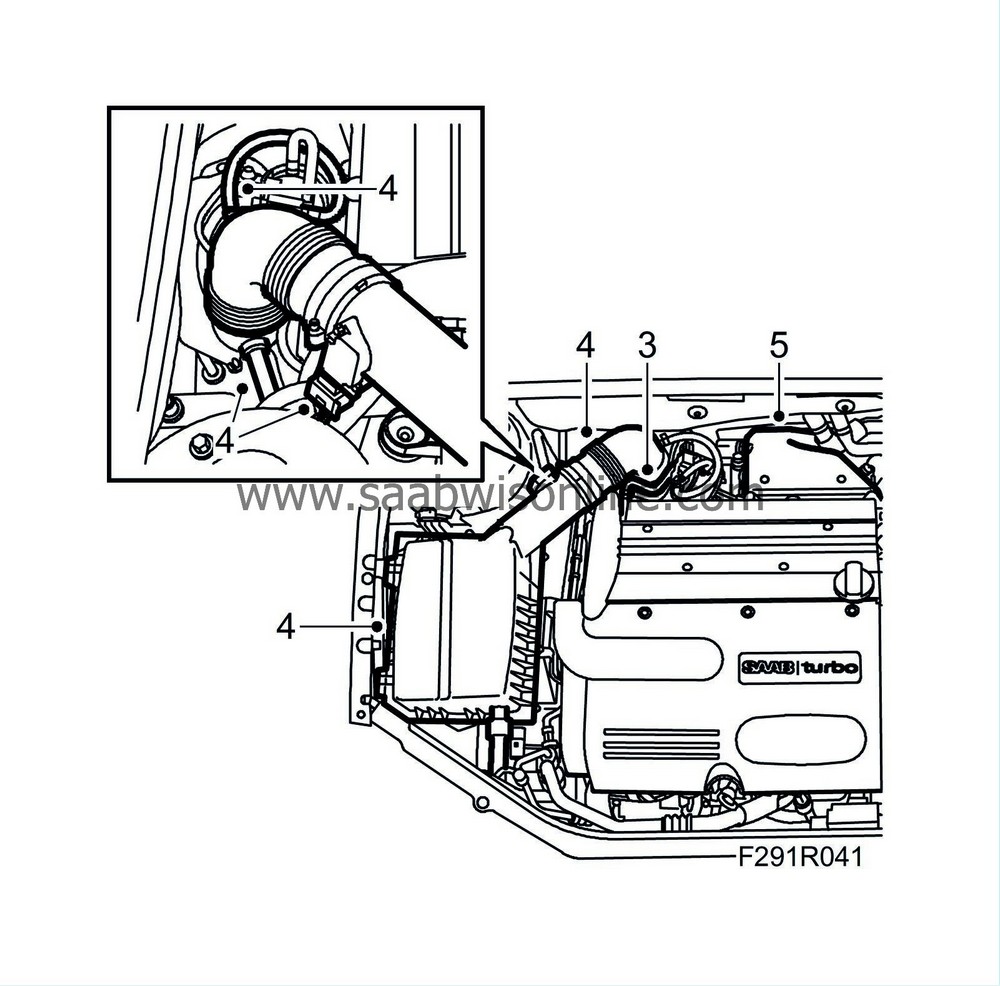
|
|
| 4. |
Remove the air cleaner casing and turbo inlet hose.
|
|
| 5. |
Remove the heat shield over the turbocharger.
|
|
| 6. |
Detach the solenoid valve hoses from the turbo.
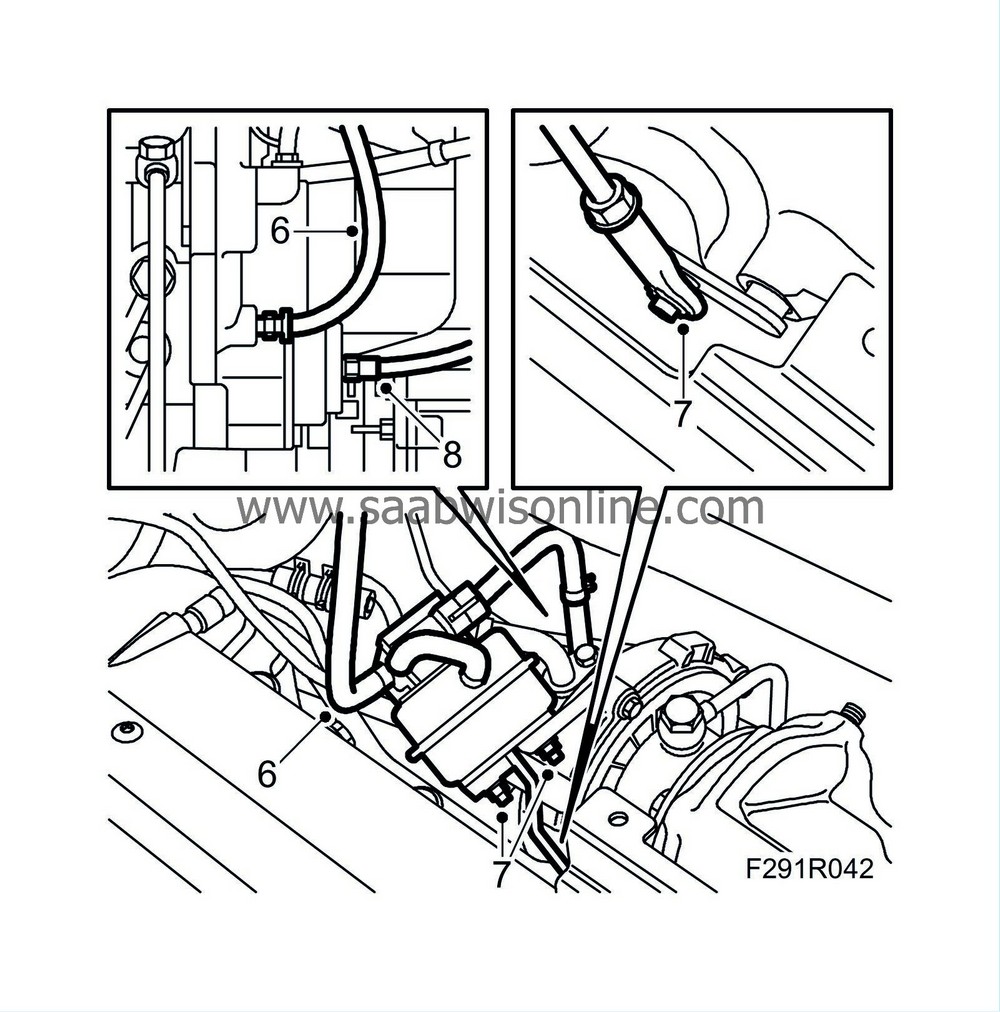
|
|
| 7. |
Remove the locking clip from the turbo control arm, using
83 94 538 Tool, locking washer
, and remove the vacuum unit from the turbo.
|
|
| 8. |
Remove the hose from the turbo bypass valve.
|
|
| 9. |
Remove the upper oxygen sensor.
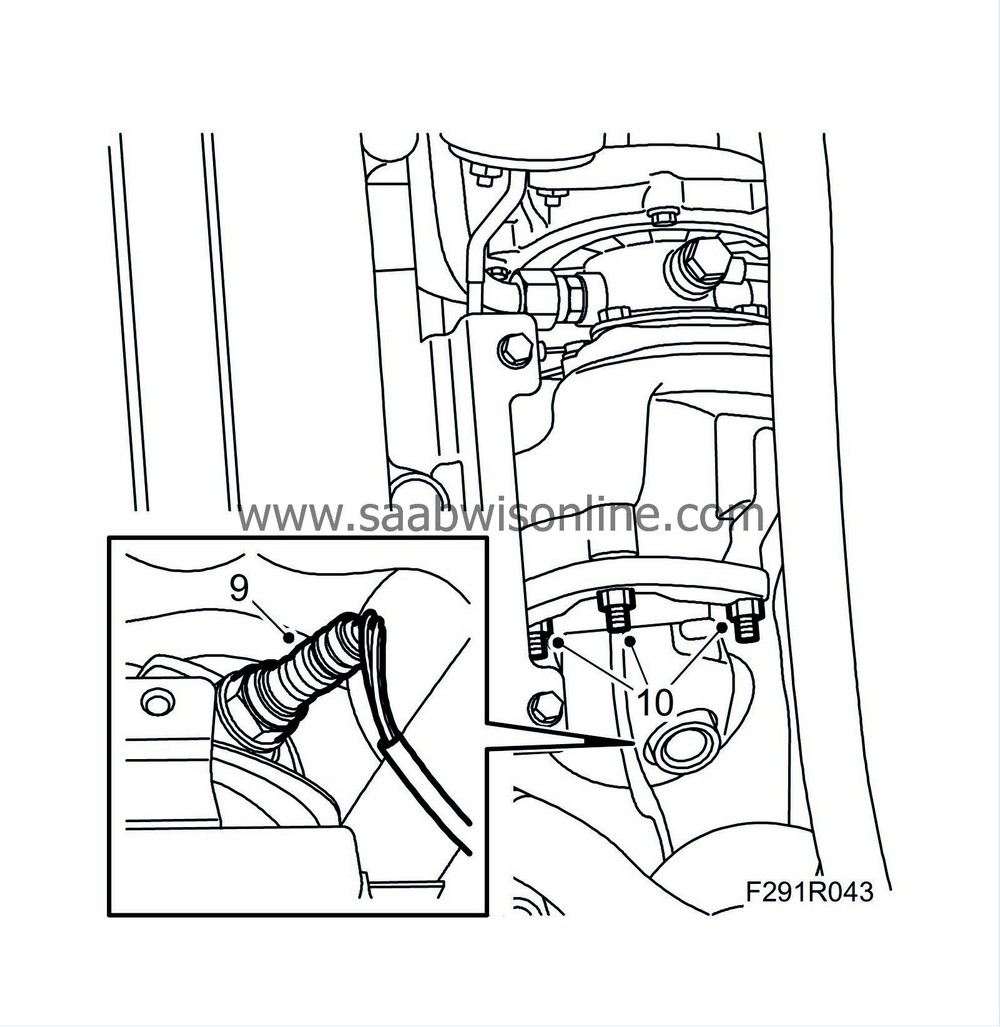
|
|
| 10. |
Remove the nuts for the catalytic converter connection with the turbocharger.
|
||||||||||
| 11. |
Raise the car.
|
|
| 12. |
Remove the front spoiler shield. See
spoiler shield, removal
.
CV: Remove Chassis reinforcement, front supporting frame, CV |
|
| 13. |
Place a receptacle under the car, connect a hose to the radiator and drain the coolant. Move the receptacle and drain the coolant pump.
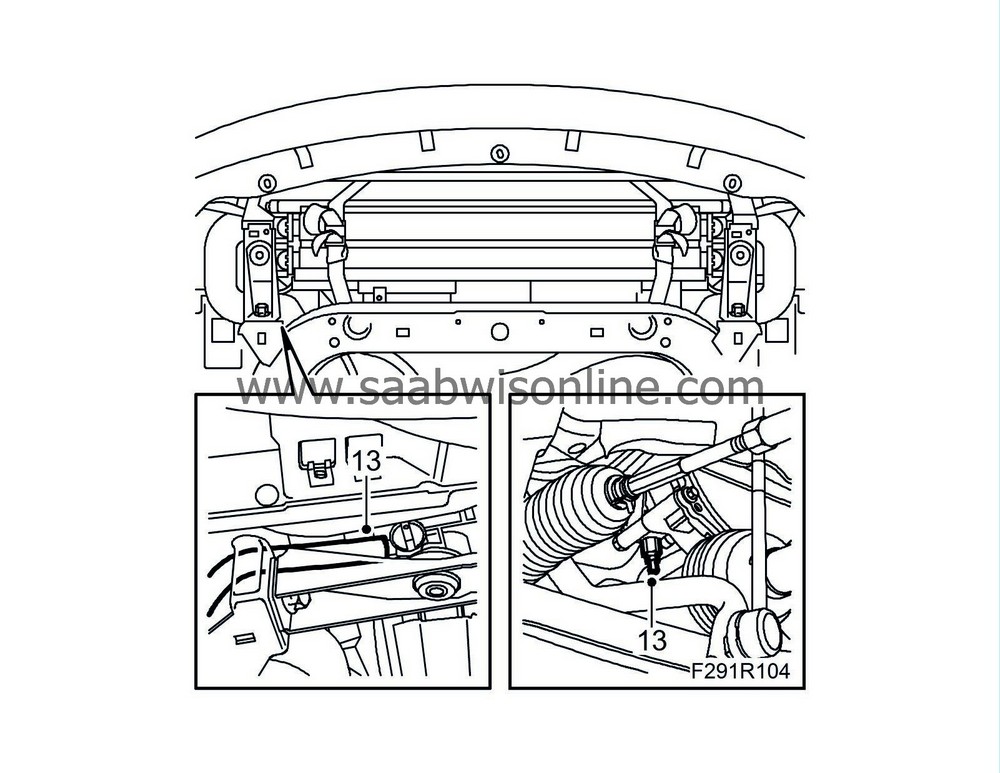
|
|
| 14. |
Lower the car.
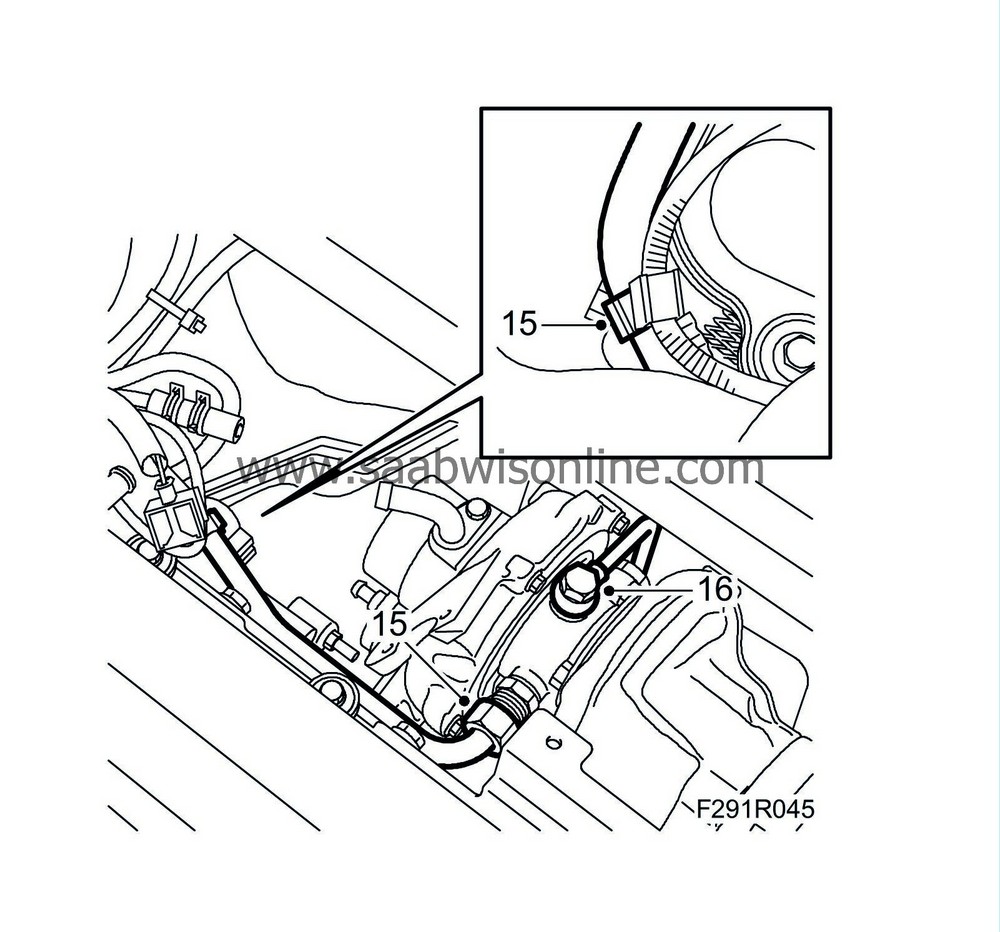
|
|
| 15. |
Remove the turbo coolant pipe from the turbo and release the coolant pipe fixing from the cylinder head.
|
|||||||
| 16. |
Remove the turbo oil pipe from the turbo.
|
|
| 17. |
Raise the car.
|
|
| 18. |
Remove the lower turbocharger pressure pipe.
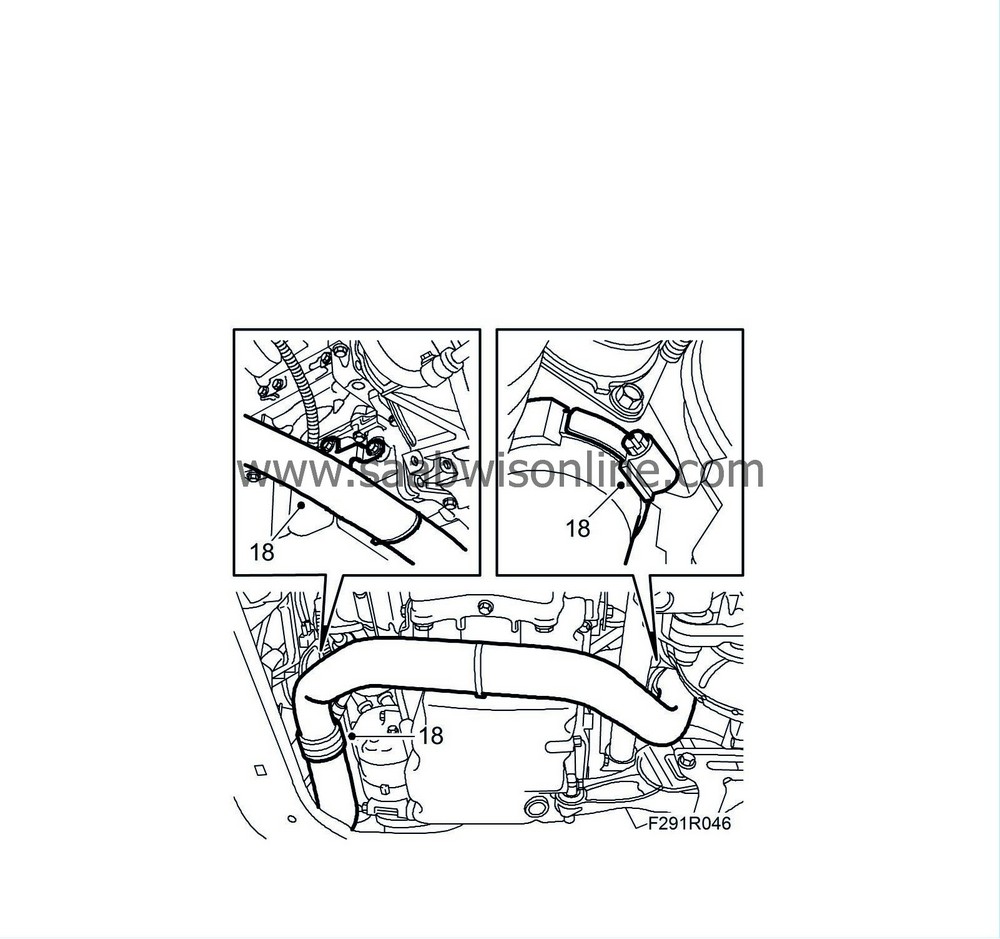
|
|
| 19. |
Detach the front pipe from the catalytic converter. See
Removal, front pipe
.
|
|
| 20. |
Remove the heat shield over the steering gear.
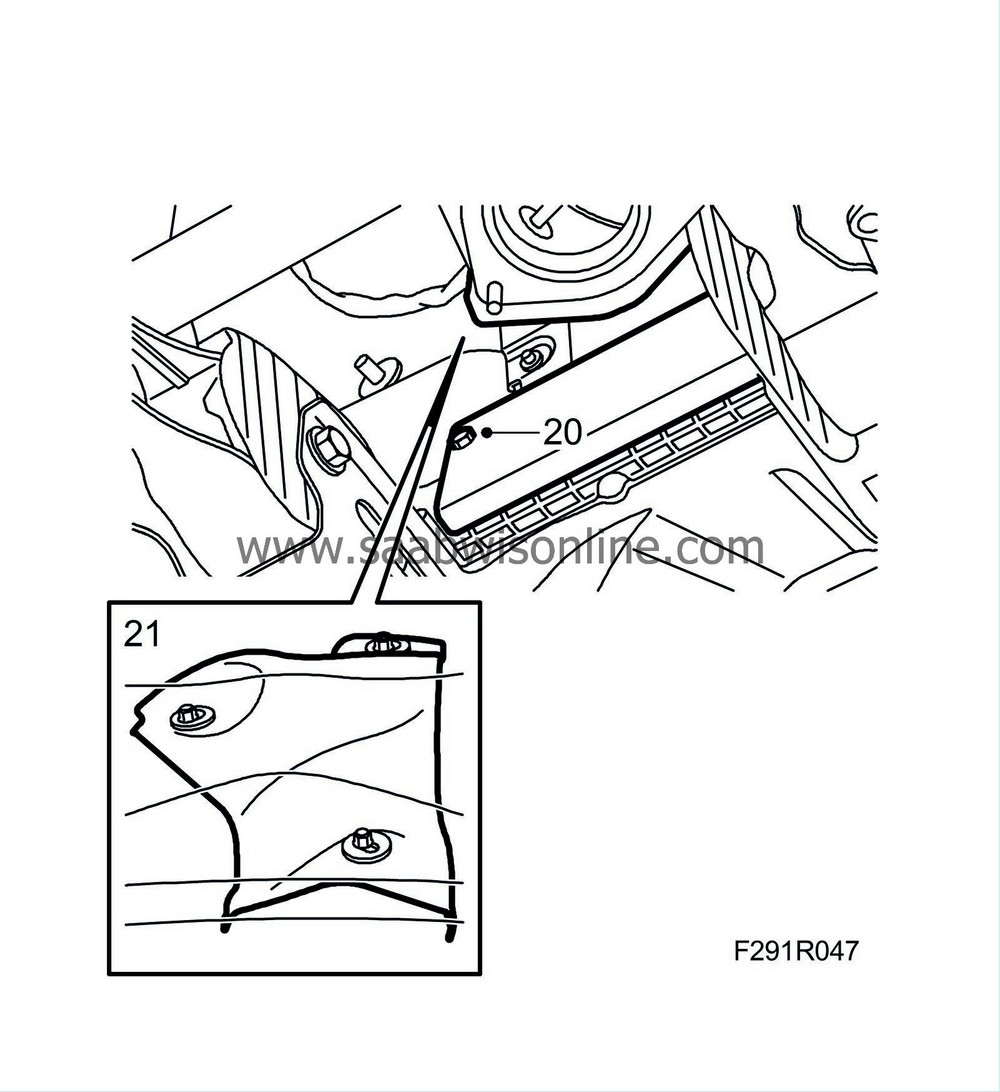
|
|
| 21. |
Remove the heat shield over the catalytic converter.
|
|
| 22. |
Remove the lower oxygen sensor.

|
|
| 23. |
Remove the catalytic converter fixing from the engine block.
|
|
| 24. |
Remove the catalytic converter.
|
|
| 25. |
Remove the turbo coolant pipe from the thermostat housing and turbo.

|
|
| 26. |
Remove the screws to the turbo oil return pipe from the turbo.
|
||||||||||
| 27. |
Remove pipe and its O-ring from the connection hole in the engine block.
|
|
| 28. |
Release the turbo oil pressure pipe from the engine block and remove the pipe.
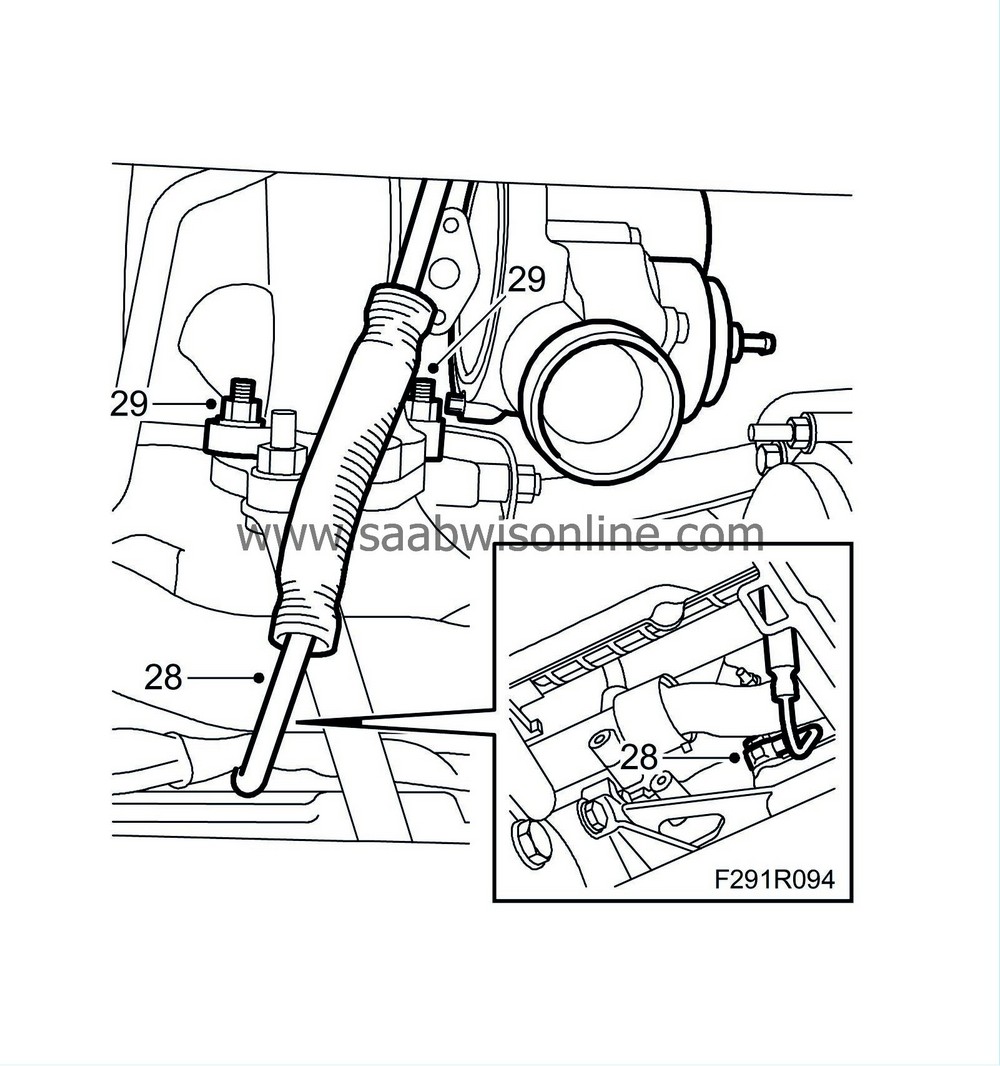
|
|
| 29. |
Remove and lift the turbo down.
|
|
| To fit |
| 1. |
Fit a new gasket.
|
|
| 2. |
Coat the turbo stud bolts with
30 20 971 Screw-thread paste
.
|
|
| 3. |
Coat the exhaust manifold stud bolts with
30 20 971 Screw-thread paste
.
|
|
| 4. |
Lift up and fit the turbo.
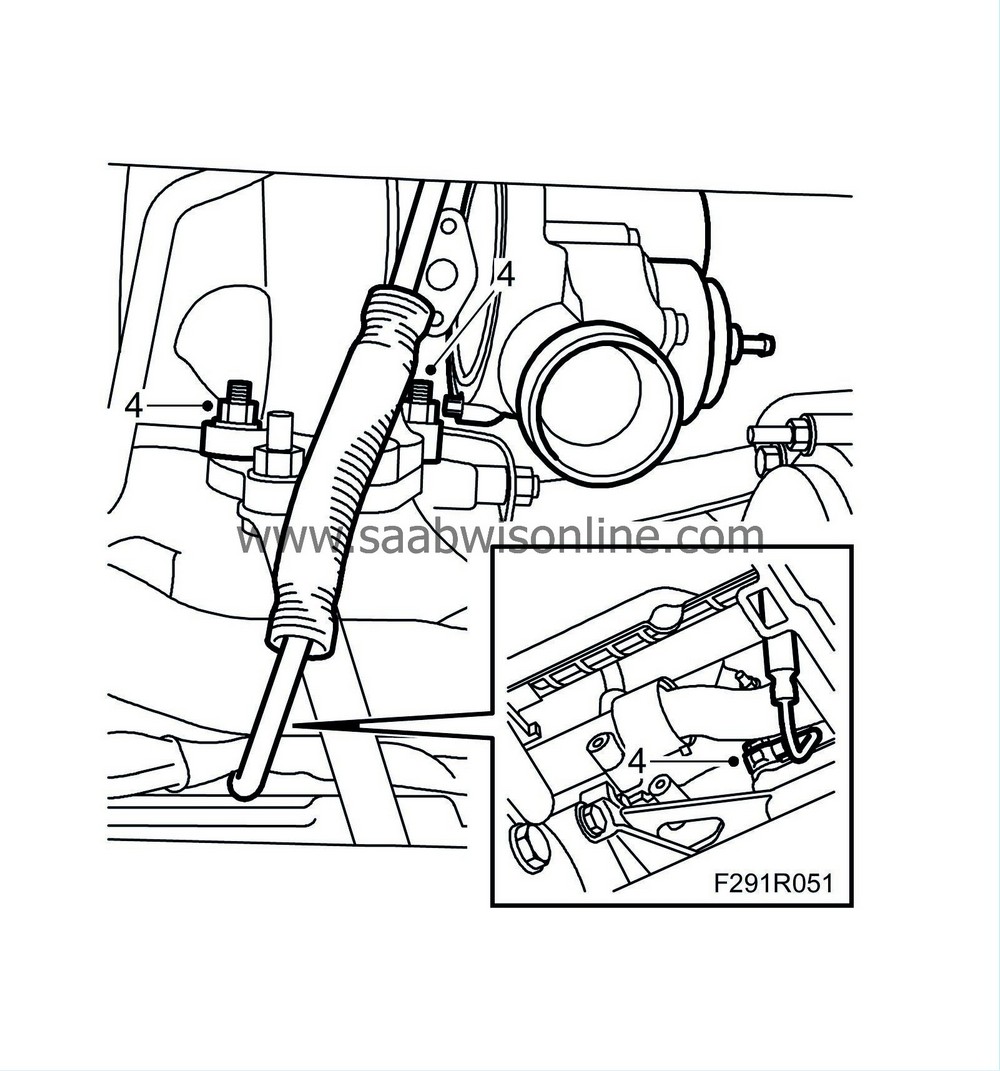
Tightening torque 24 Nm (18 lbf ft) |
|
| 5. |
Fit the turbo oil return pipe to the turbo with a new gasket and connect the pipe with a new O-ring, sparingly lubricated with
Vaseline, non-acidic
to the connecting hole in the engine block.
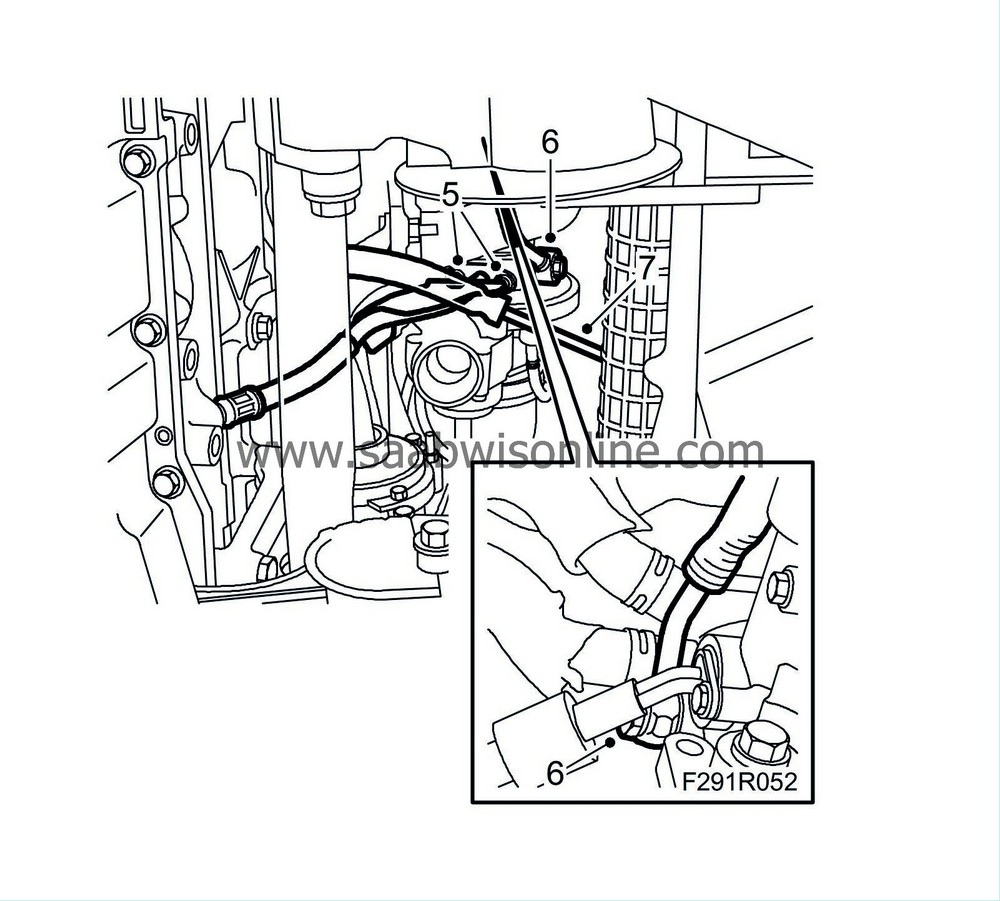
Tightening torque, oil return pipe to turbo 15 Nm (11 lbf ft) |
|
| 6. |
Fit the coolant pipe between the turbo and the thermostat housing with new sealing washers.
Tightening torque 20 Nm (15 lbf ft). |
|
| 7. |
Fit new sealing washers and screw in the bolt for the turbo oil delivery pipe on the engine block without tightening it.
|
|
| 8. |
Lower the car.
|
|
| 9. |
Fill with plenty of engine oil in the hole for the oil delivery connection on the turbo while turning the turbine wheel.
|
|
| 10. |
Fit the oil delivery pipe to the turbo and tighten the connection using new sealing washers. Grip the pipe so that it does not rotate.
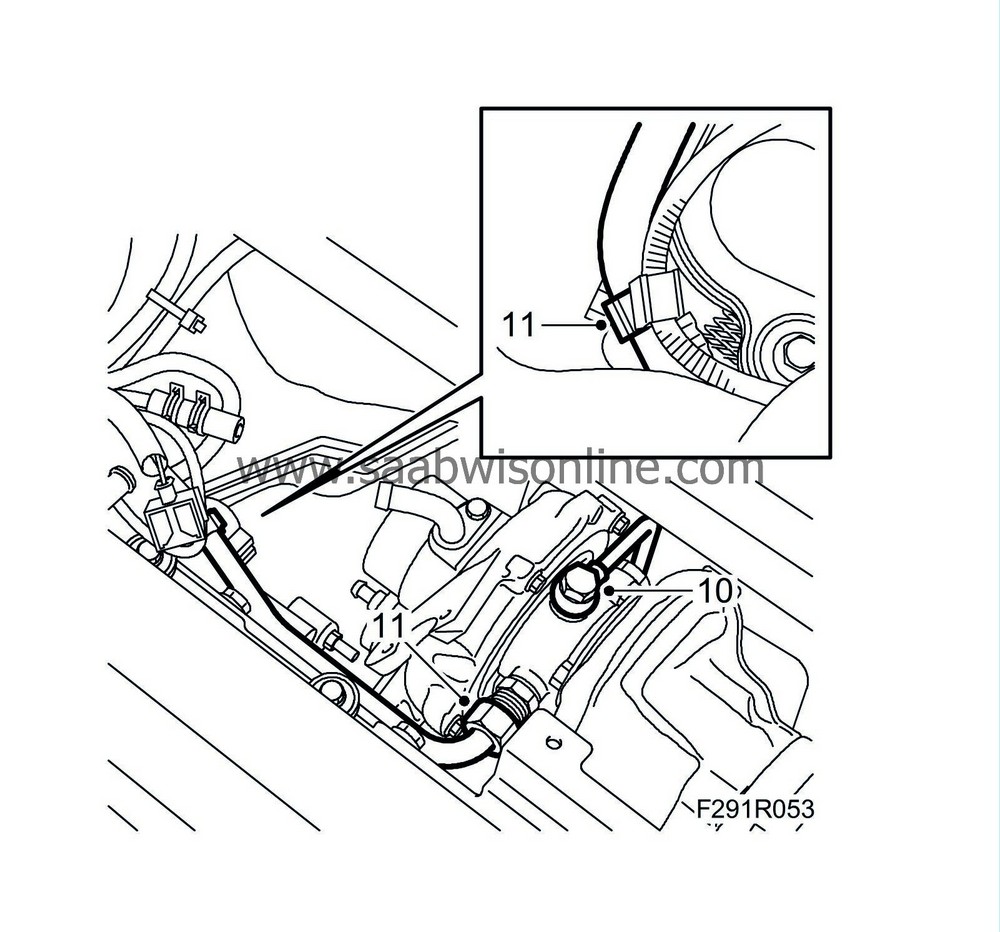
Tightening torque 28 Nm (21 lbf ft) |
|
| 11. |
Position and fit the coolant pipe to the turbo and tighten the pipe mounting on the cylinder head.
|
|
| 12. |
Connect the hose to the bypass valve.
|
|
| 13. |
Raise the car.
|
|
| 14. |
Tighten the oil delivery pipe connection on the engine block.
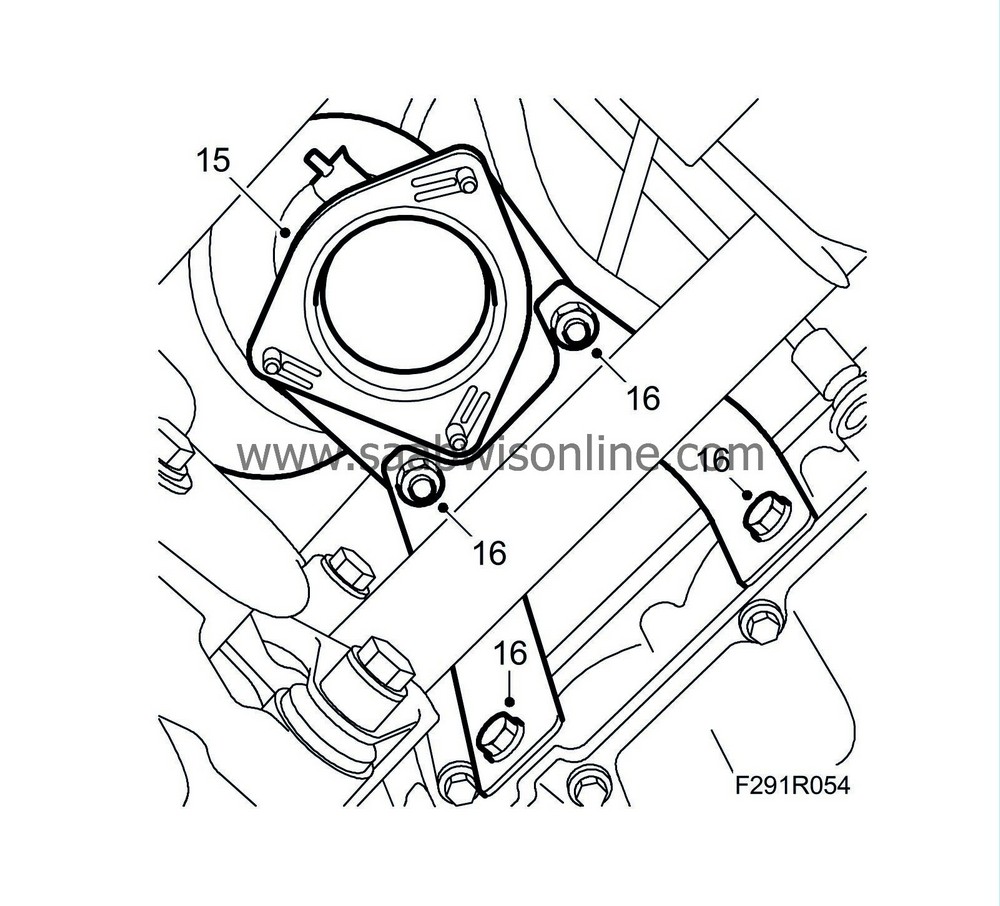
Tightening torque 28 Nm (21 lbf ft) |
|
| 15. |
Lift up the catalytic converter, position its bracket to the studs on the engine block and position the catalytic converter to the turbocharger connection.
|
|
| 16. |
Insert the catalytic converter bracket bolts into the engine block and new nuts on the studs.
|
|
| 17. |
Lower the car.
|
|
| 18. |
Lubricate the turbocharger studs with
30 20 971 Screw-thread paste
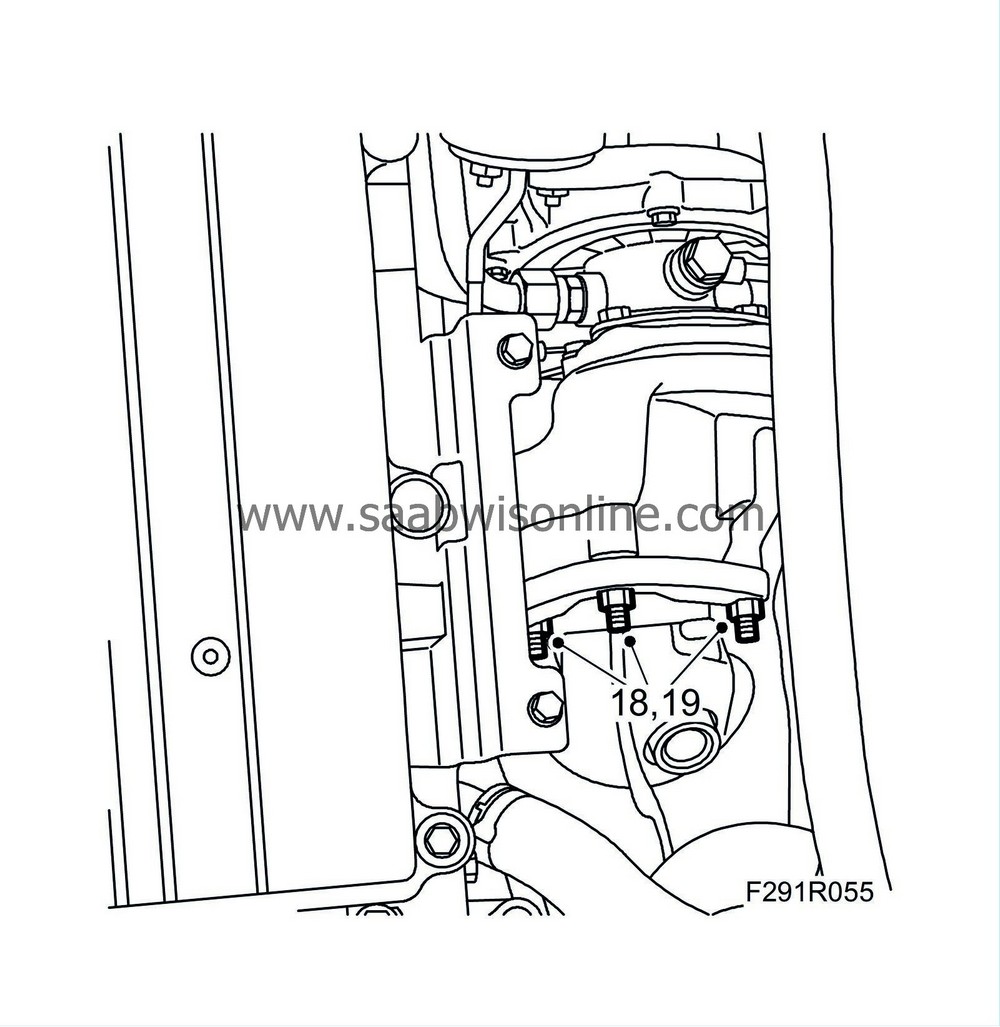
|
|
| 19. |
Fit the catalytic converter with new nuts so that it rests evenly against the turbo.
Tightening torque 25 Nm (18 lbf ft). |
|
| 20. |
Raise the car.
|
|
| 21. |
Tighten the catalytic converter nuts and bolts a last time.
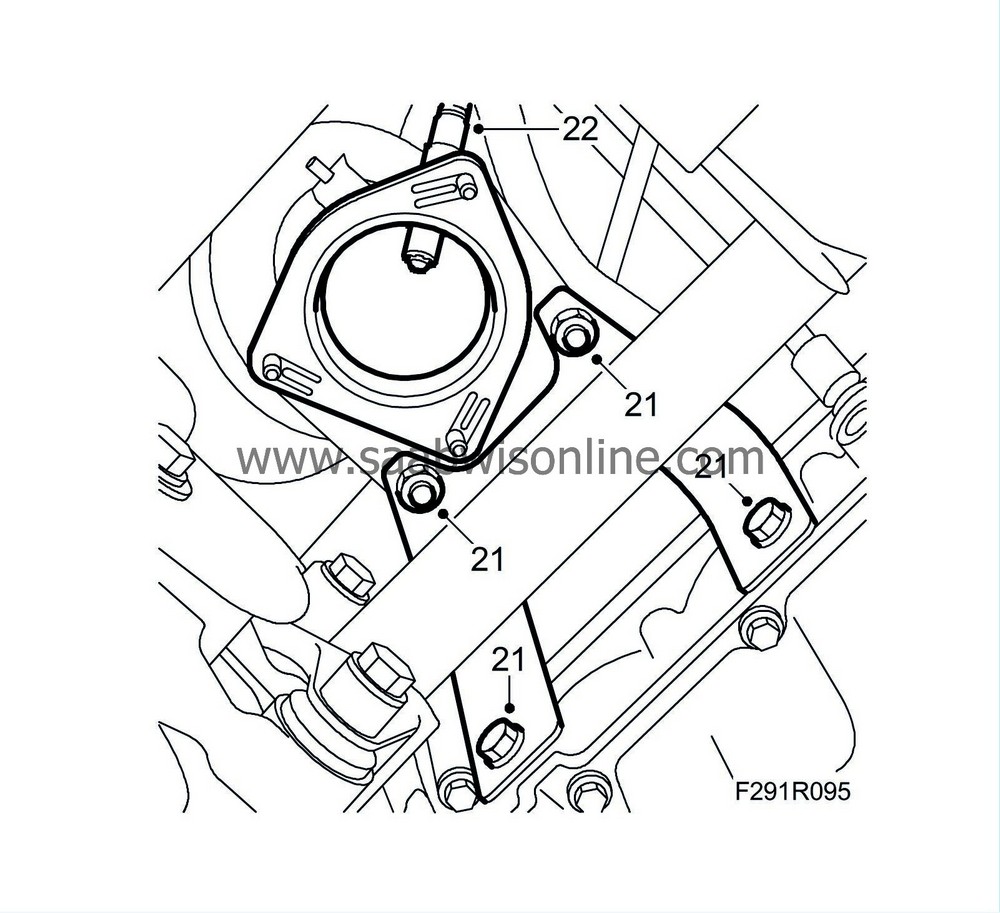
Tightening torque, bolt 22 Nm (16 lbf ft). Tightening torque nuts 25 Nm (18 lbf ft) |
|
| 22. |
Lubricate the threads sparingly with
30 20 971 Screw-thread paste
and fit the lower oxygen sensor.
Tightening torque 40 Nm (30 lbf ft).
|
||||||||||
| 23. |
Lift up the oxygen sensor cables.
|
||||||||||
| 24. |
Fit the heat shield over the catalytic converter.
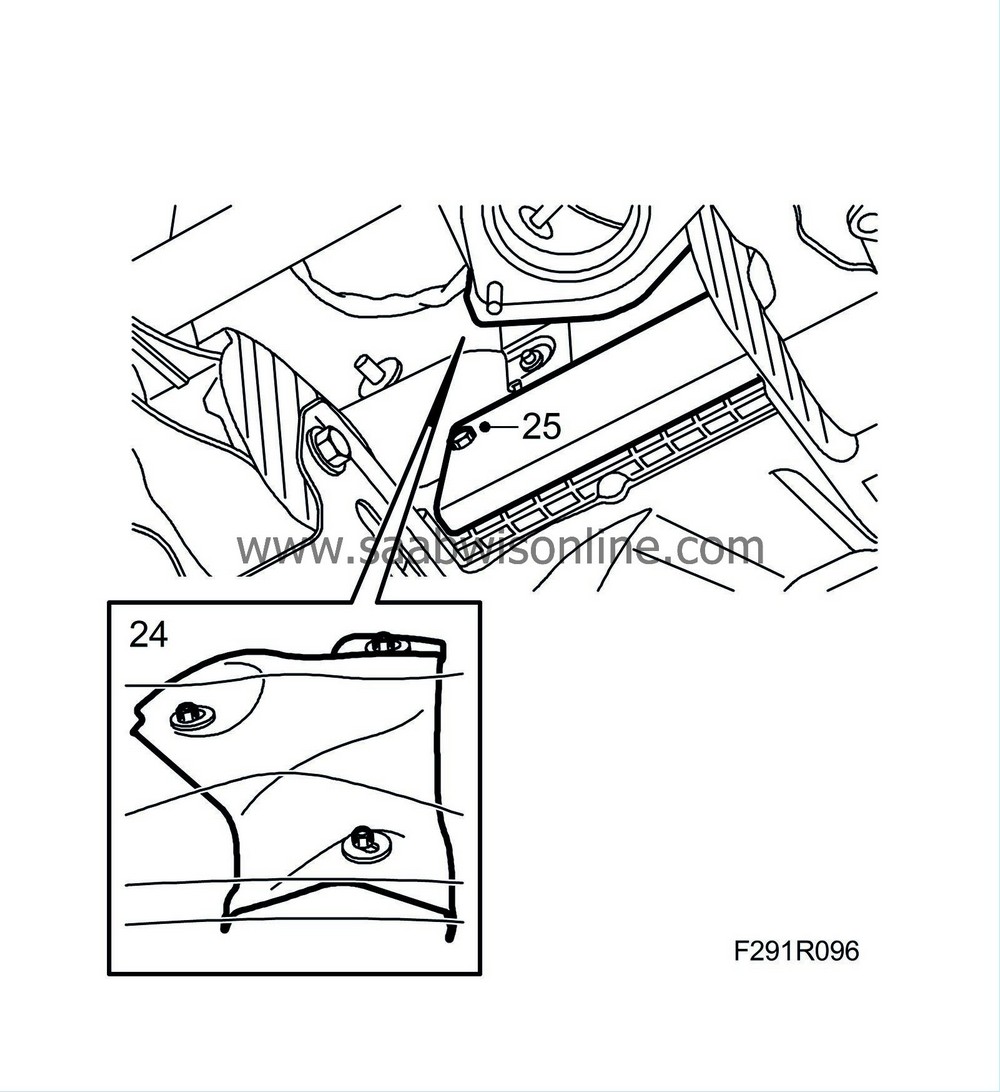
|
|
| 25. |
Fit the heat shield over the steering gear.
|
|
| 26. |
Clean the joint on the catalytic converter and the pipe connection to the front silencer.
|
|
| 27. |
Mount the joint clamp and fit the front pipe with a new gasket, new nuts and rubber mountings. Lubricate the studs with
30 20 971 Screw-thread paste
.
|
|
| 28. |
Move over the joint clamp so that the pipe ends are in the middle of the clamp.
|
|
| 29. |
Tighten the joint with the catalytic converter.
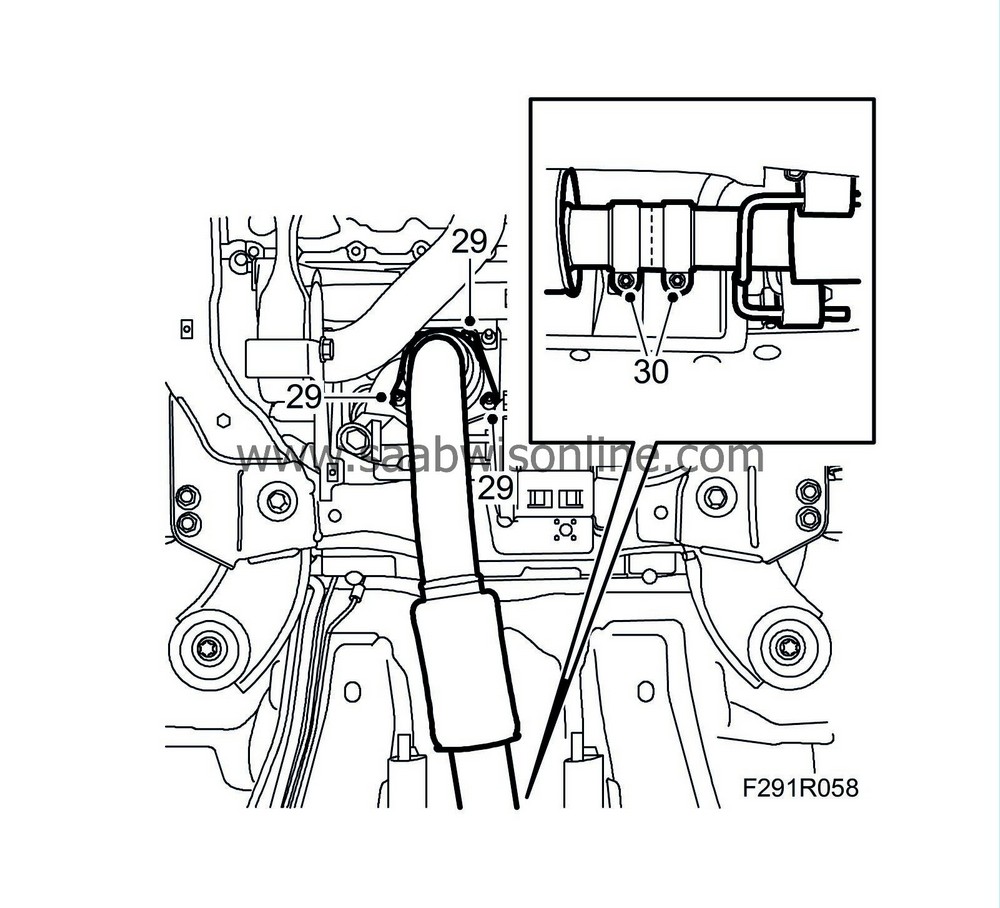
Tightening torque 25 Nm (18.5 lbf ft) |
|
| 30. |
Tighten the joint clamp nuts.
Tightening torque 40 Nm (30 lbf ft). |
|
| 31. |
Fit the turbocharger delivery pipe.
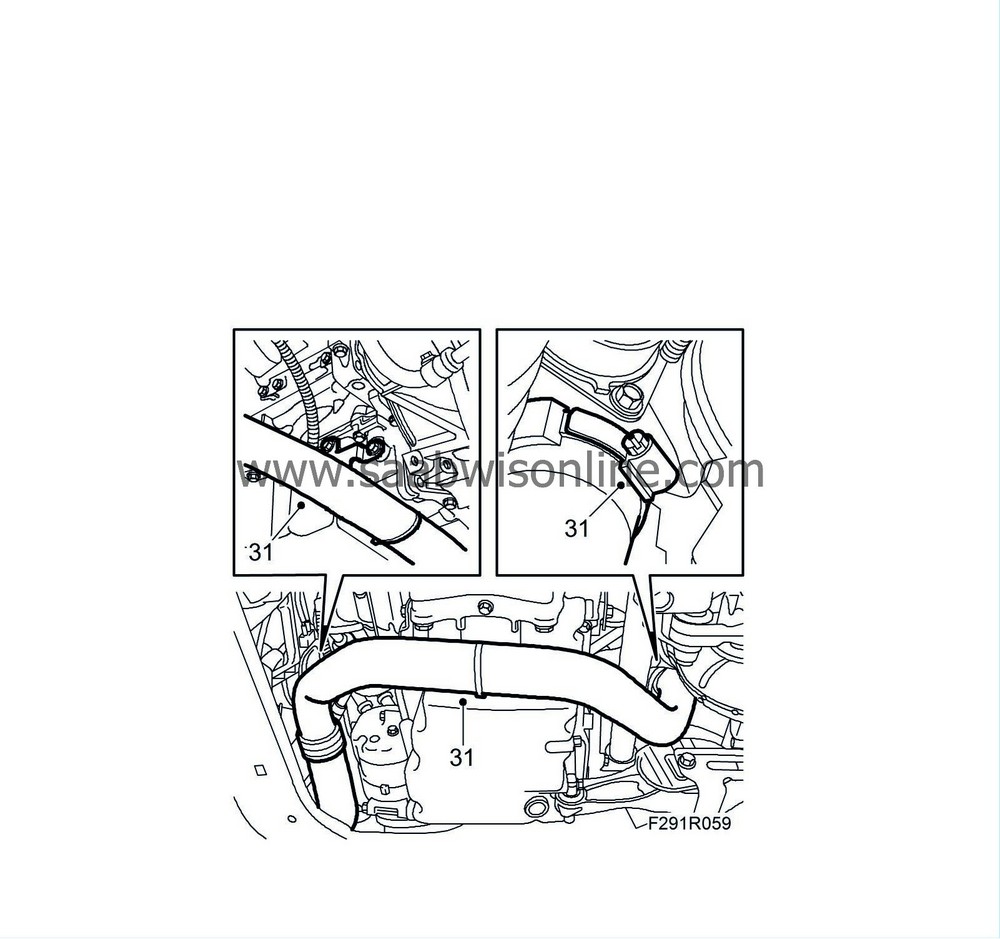
|
|
| 32. |
Close the radiator drain hole and refit the front spoiler shield. See
Spoiler shield, fitting
.
|
|
| 33. |
Lower the car.
|
|
| 34. |
Lubricate the threads sparingly with
30 20 971 Screw-thread paste
and fit the upper oxygen sensor.
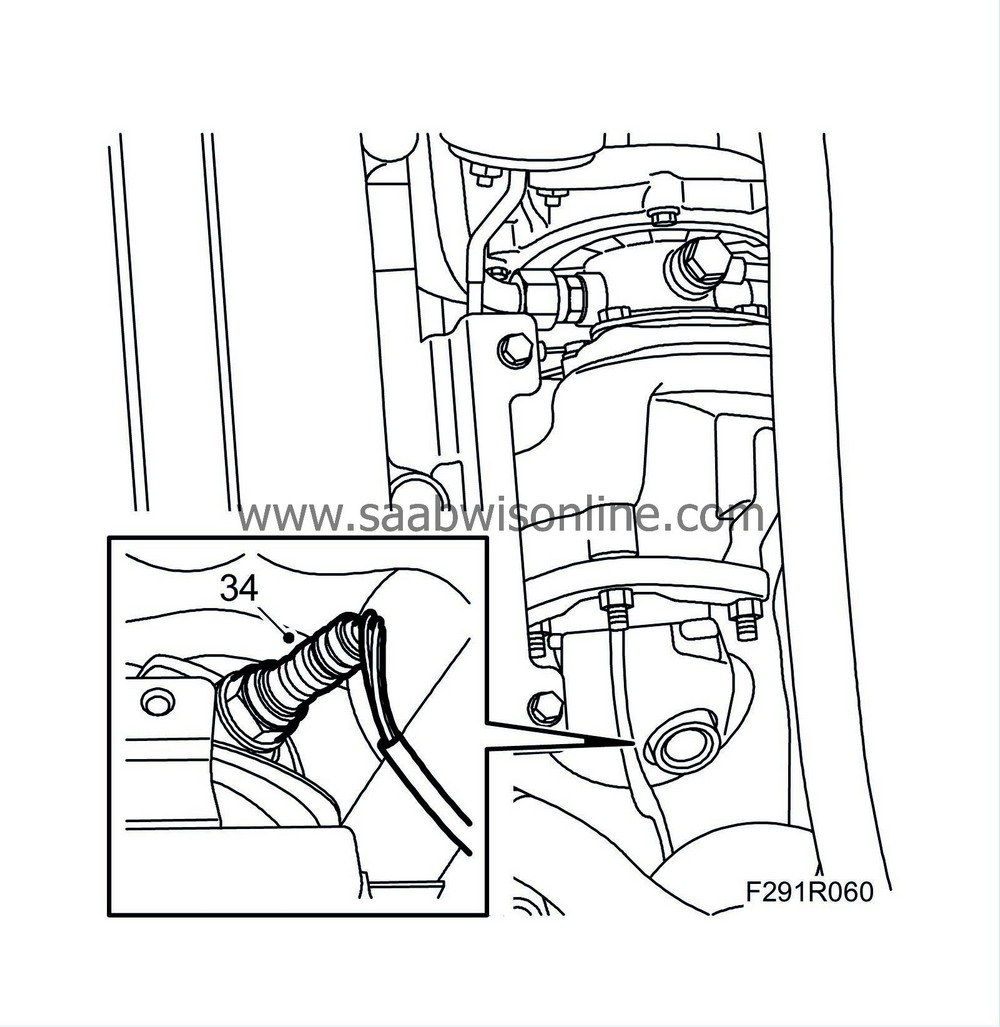
Tightening torque 40 Nm (30 lbf ft). |
|
| 35. |
Plug in and secure the oxygen sensor connectors.
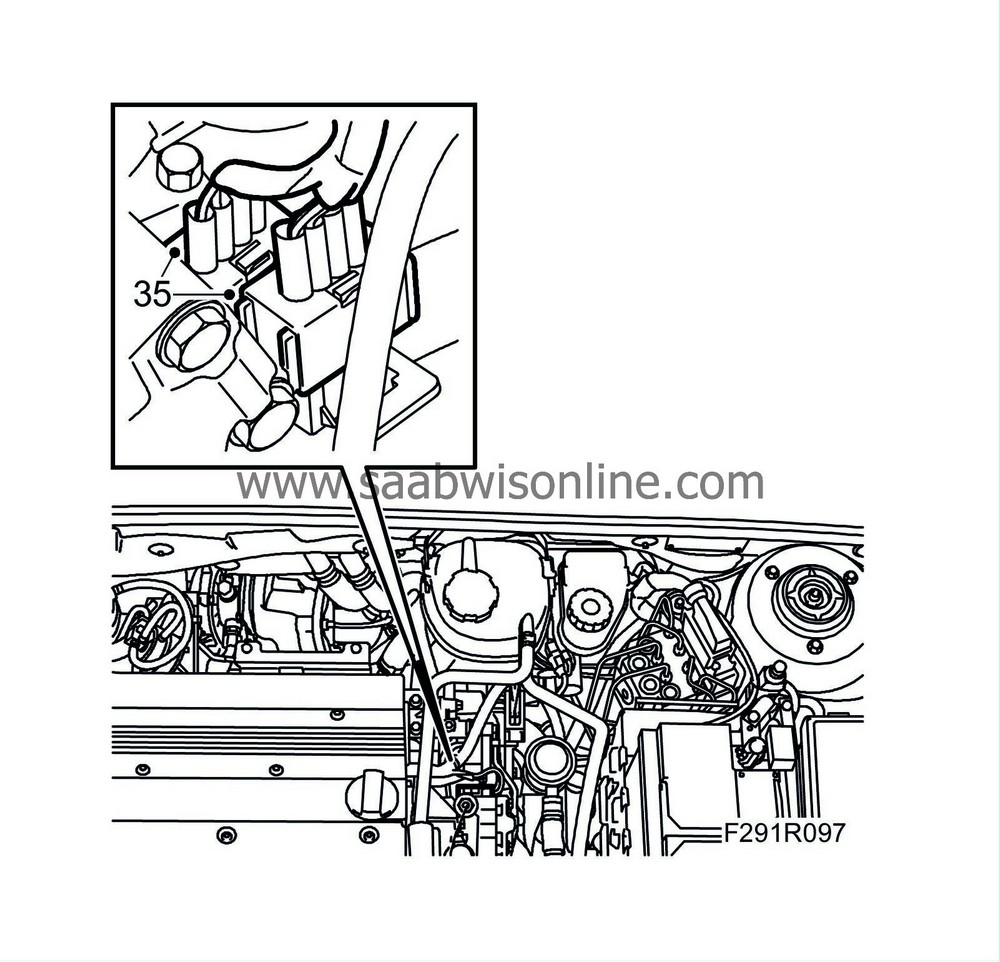
|
|
| 36. |
Fit the vacuum unit to the turbo.
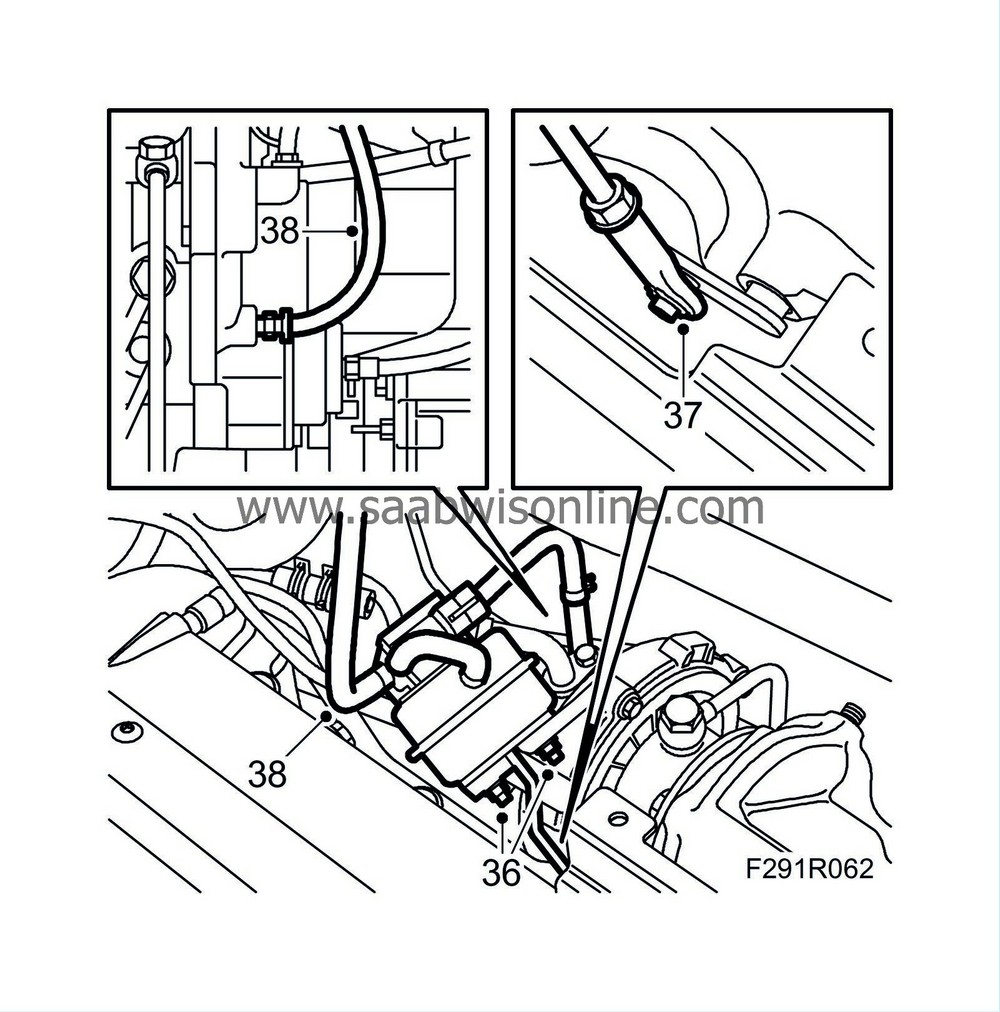
|
|
| 37. |
Position the control rod to the control arm and fit the lock clip. Use tool 83 94 538.
|
|
| 38. |
Fit the control valve hoses to the turbo.
|
|
| 39. |
Fit the turbocharger heat shield.
|
||||||||||
| 40. |
Refit the air cleaner casing and turbo inlet hose.
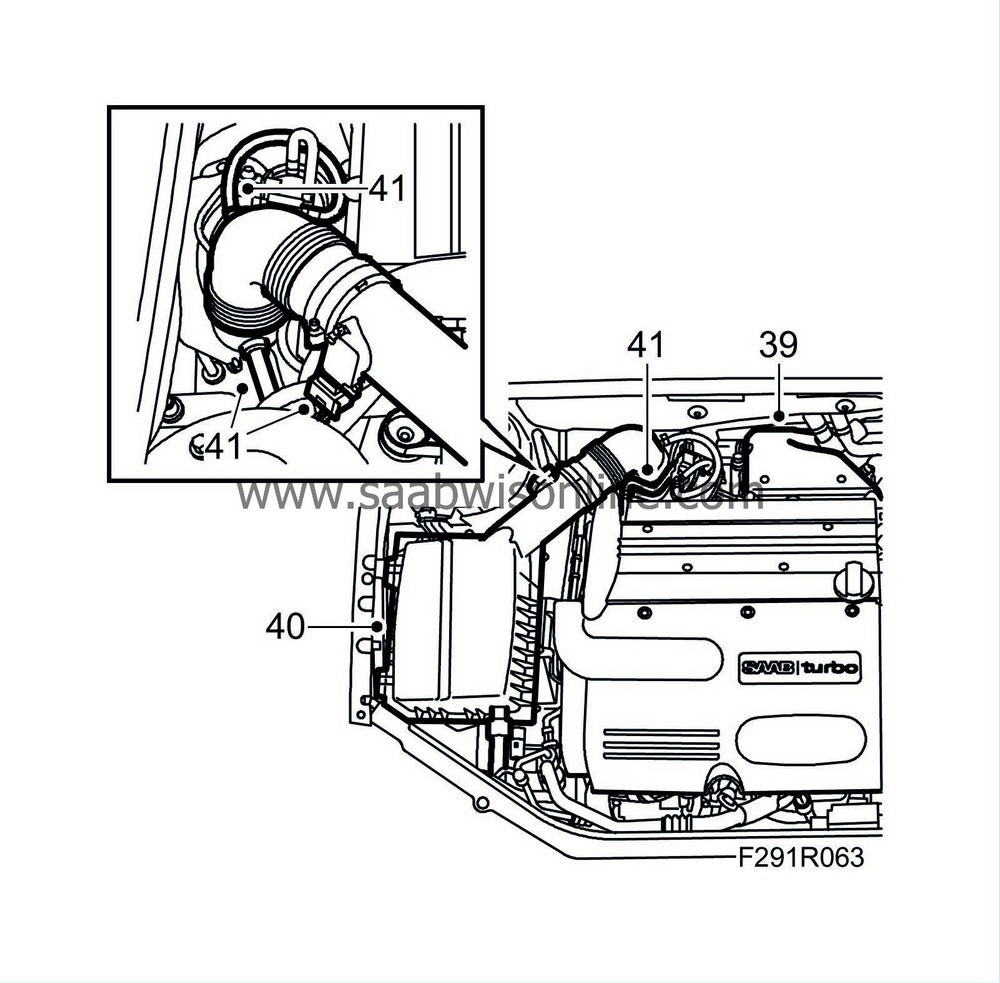
|
|
| 41. |
Fit the crankcase ventilation hose to the camshaft cover and turbo as well as the hose from the solenoid valve.
|
|
| 42. |
Fill with coolant to approx. 20 mm above the mark on the expansion tank.
|
|
| 43. |
Check for coolant leaks.
|
|
| 44. |
Check the oil and coolant level and top up as necessary.
|
|

 Warning
Warning

